Enjoying the outdoors in your backyard is made comfortable with the addition of gazebos. However, high winds can be dangerous and damaging for gazebos, which is why it’s important to secure them properly. By using suitable materials and techniques, it is possible to safeguard your gazebo from powerful winds and maintain its stability over an extended period. This guide will provide you with step-by-step instructions on how to protect your gazebo from wind damage, allowing you to enjoy the outdoors without worrying.
Can a Gazebo Withstand Wind?
Gazebos are generally designed and constructed to withstand winds that are not too strong. However, strong winds can cause the structure to become unstable and ultimately collapse if it is not properly secured.
Protecting Temporary Gazebos From The Wind
When using a temporary gazebo outdoors, you’ll want to make sure that it is properly secured.

High winds can cause disastrous damage and even potentially blow the gazebo away altogether. Here are some tips to protect your gazebo from the wind:
- To keep the gazebo in place, it’s recommended to use strong anchors like sandbags, stakes, or weights.
- If possible, set up your gazebo on a flat surface. A sloped terrain can redirect gusts of wind and increase the chances of damaging your gazebo.
- Add additional sidewalls and ties to the structure for extra support against strong winds.
- If available, erect windbreaks around the gazebo, such as trees or walls.
- You should think about buying a gazebo that is heavy-duty or storm-resistant. Look for one that has specially designed anchors and ties that can withstand strong winds. [1]
Opt For Wind-Resistant Gazebos
When it comes to selecting a gazebo for your outdoor space, consider choosing one specifically designed to resist windy conditions. These models are typically constructed of steel or aluminum frames and feature sturdier fabric material than traditional pop-up canopies. Also, search for characteristics such as curved roofs, airy metals, and strengthened joints that can enhance the gazebo’s ability to endure strong winds.
Proper Setup is Key for Wind Security
To secure a gazebo from the wind, it is important to ensure that it is properly installed. To do this, you should ensure that all of the bolts and screws are tightened firmly and that any straps or ties used to secure the structure are taut. If you’re using metal poles for support, be sure to anchor them securely in the ground to prevent them from shifting or being blown over. If your gazebo has a roof, it is recommended to add weights to it for stability.
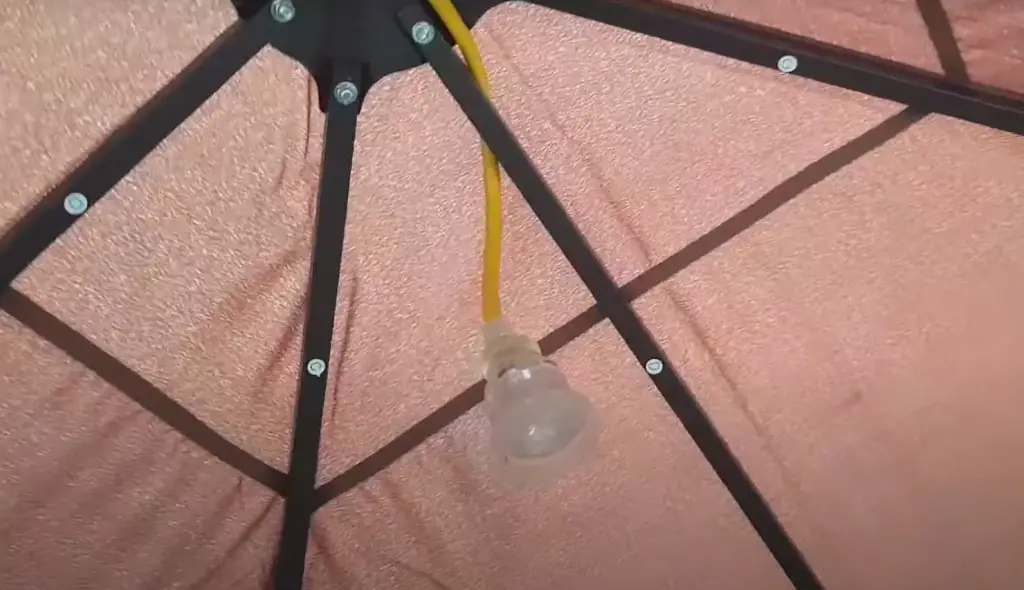
This will help keep the roof from billowing and blowing away in strong gusts of wind. Finally, make sure that you check all of these steps regularly and tighten any loose parts as needed. With a secure setup, you can rest assured that your gazebo will stay in place and remain safe even in strong winds. [2]
Gazebo Leg Weights & Anchors
Using leg weights and anchors for your gazebo is straightforward and from getting blown away by the wind.
Additionally, you may also choose to use tent stakes specifically designed for gazebos to anchor them in place. For maximum stability when using gazebo leg weights and anchors, make sure that the weight of each leg is evenly distributed.Bolts & Straps
Using bolts and straps is an effective way to secure a gazebo and protect it from wind. Bolts are inserted into the ground, then the gazebo frame is attached to the bolts with adjustable straps. This ensures that the structure will not shift when the wind begins to blow. The quantity of bolts and straps required for the gazebo depends on its size and the amount of wind it will face.
Threaded Rods
Threaded rods and bolts are excellent for securely anchoring a gazebo to the ground.
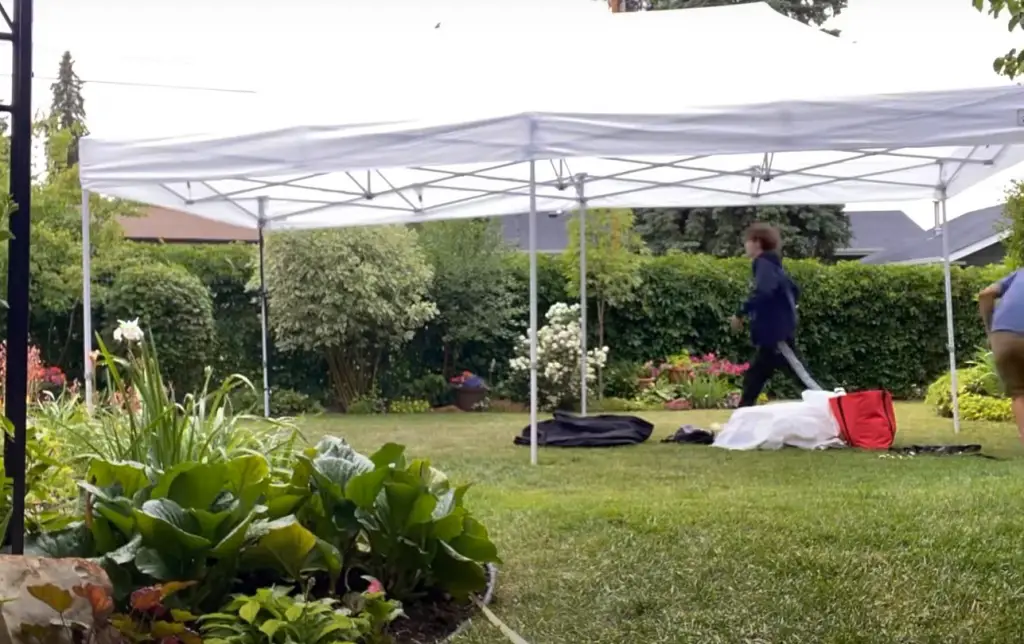
To set up, hammer the threaded rod into the ground at all four corners and tighten it with nuts and bolts. It helps keep the gazebo stable in high winds by preventing it from moving or tipping over. Be sure to use quality anchors and check that they are secure before using the gazebo. [3]
Hard Ground Tent Pegs, One Size
Hard ground tent pegs are the most important tool in your wind protection kit. The type of peg you choose will depend on the type of soil and surface you have to work with. Soft, sandy soils require long pegs that can penetrate deep into the ground and provide a secure anchor point for your gazebo. For hard, rocky surfaces, you should choose a peg with a sharp point. To ensure a strong anchor for your gazebo, follow these steps for driving the peg into the ground. When choosing tent pegs, make sure you select a size that fits your needs. Oversized pegs can be extremely difficult to drive into hard ground, while undersized pegs may not provide enough tension to keep your gazebo secure in high winds.
Heavy Duty Anchoring Kit
To best protect the gazebo from strong winds, it is recommended to use a heavy-duty anchoring kit.
Auger anchors have large helical threads that can penetrate hard soil and provide a secure anchor point. Once the anchors are in place, tie-down straps or guy ropes can be attached to them and then secured to the gazebo frame.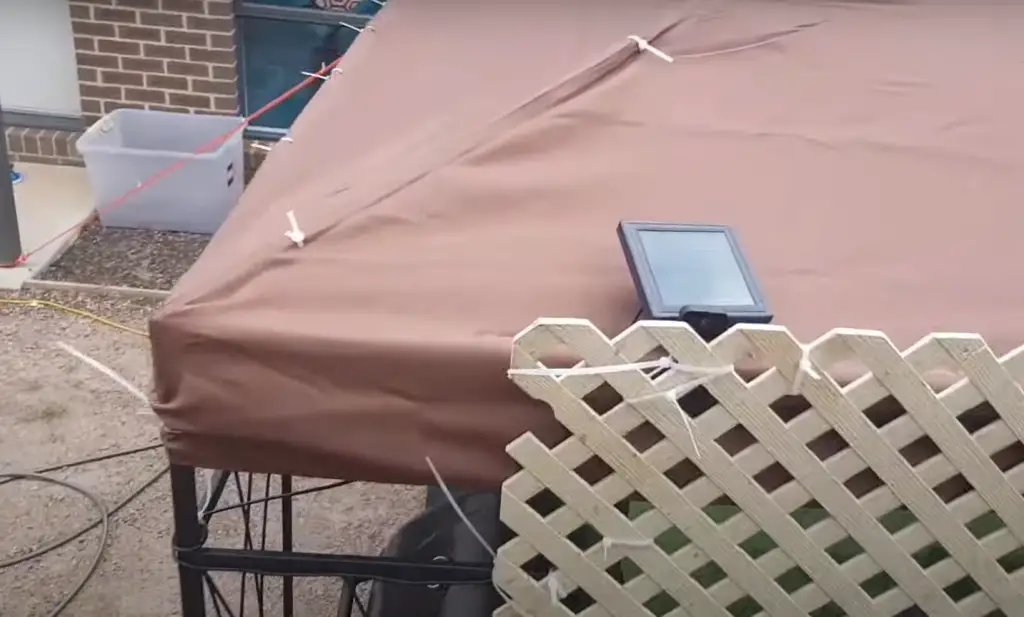
The tie-downs and guy ropes will create tension to prevent the gazebo from being blown away by strong gusts of wind, ensuring its stability. [4]
FAQ
How do you stop a gazebo from blowing away?
To secure a gazebo from wind, there are several measures you can take. Make sure to fasten the gazebo firmly to the ground using either strong stakes or guy lines, depending on the type of structure and location. Using furniture or weighted items to anchor it can provide additional stability during strong winds. You can also install wind panels on the sides of the gazebo. This will prevent strong winds by breaking up gusts and protecting the gazebo. Finally, a good rule of thumb is to always check on your gazebo before and after severe weather events in order to make sure that it is securely fastened and not at risk for blowing away.
Can a gazebo withstand wind?
If a gazebo is properly installed and secured, it can withstand wind. To make sure your gazebo stays in place during strong winds, follow these steps to secure it properly. First, consider where you will be installing your gazebo. Ideally, it should be placed away from trees and other tall objects that can catch the wind. Also, make sure the gazebo is installed on level ground and with enough room to allow for air circulation around it. However, if the wind is very strong and you are unable to move your gazebo, there are still ways to protect it.
How do you secure a freestanding gazebo?
If you have a freestanding gazebo, it can be difficult to make sure that it is secure and will not blow away in the wind. There are several steps to properly securing your gazebo from winds. The first step is to ensure that any existing tie-down straps, buckles, clips, and straps are properly fastened and secured. The next step is to use sandbags or weights to secure the gazebo legs and poles on all sides. Sandbags should be placed at the base of each leg, around the perimeter of the gazebo. Place larger bags in the center and smaller ones around the corner poles. The weight of the sandbags will help keep the gazebo secure, even in strong winds. Finally, you should also use wind anchors or stakes to further anchor down your gazebo. Place the anchors at least 10-20 feet away from the gazebo and spread them out around its perimeter. Make sure to use heavy-duty stakes that are designed for outdoor use and will not rust or corrode.
How do I stop my gazebo roof from flapping in the wind?
There are a few options to help secure your gazebo from the wind. One option is to place weights on the roof of the gazebo. You can use sandbags, water bags or firewood logs as weight to keep your roof from flapping in the wind. It’s important that you evenly distribute the weight around the roof to ensure it is effective. To better protect your gazebo from wind, you can attach guy ropes to each corner and securely anchor them into the ground. Using this will help you keep your gazebo steady and secure, even during windy conditions. For maximum safety, it is recommended to use a strong and durable rope that can resist strong winds, and make sure to anchor it securely. You can use tie-down straps to secure the roof of your gazebo. These straps come in different sizes and lengths and should be used to securely fasten the gazebo roof to either the walls or poles. Using this will prevent the roof from flapping in the wind and make sure your gazebo stays secure. These tips will help you protect your gazebo from strong winds and keep it stable during bad weather.
Do I need to bolt down my gazebo?
To make sure your gazebo stays steady and safe during powerful winds, bolting it down is the best option. Most gazebos are sold with bolts, and if you don’t have any, you can find them easily at hardware stores.
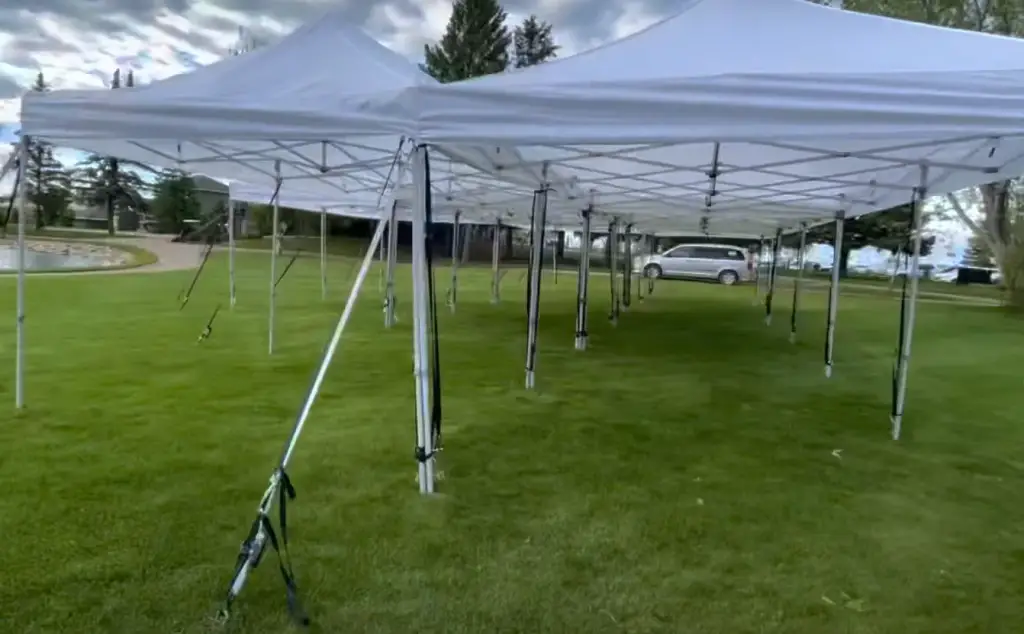
Make sure you bolt your gazebo into a solid surface such as a concrete patio or wooden deck, not just into the ground. After securely bolting down your gazebo, make sure to regularly check for any signs of movement or instability. Also check your bolts periodically to ensure they are still tight.
Is it better to leave the sides on a gazebo in the wind?
It is recommended to keep the sides on a gazebo during windy conditions. The side panels can function as sails and increase stability and protection against gusts. If you do take down the sides for any reason, be sure to put them up again as soon as possible when you anticipate strong winds. It is best to use weights or stakes to anchor the gazebo. However, if you are expecting strong winds and the gazebo is not anchored down, it is best to take it apart.
How much weight do you need to hold a gazebo down?
When it comes to securing a gazebo from the wind, weight is key. The heavier your gazebo is, the more secure it will be in strong winds and storms. If you’re planning on anchoring your gazebo, heavy-duty weights should be used. This can include large sandbags and concrete blocks. Using a weight heavy enough is crucial to prevent it from overturning during strong winds. Make sure you have plenty of weight, such as sandbags or large rocks, placed along each leg of the gazebo. To better secure your gazebo, use this method for anchoring it to the ground. If you’re not able to use heavy-duty weights, such as sandbags or concrete blocks, then you can also get creative with it. You could fill large bags with dirt and gravel and those around your gazebo perimeter for extra anchoring weight. Or if you have a more permanent setup, you could install metal spikes or ground anchors around the gazebo’s legs.
How do you anchor a gazebo without drilling?
An anchoring system is essential when securing a gazebo from wind. But you don’t have to resort to drilling into your deck or patio to secure it. There are several other options. One of the most popular methods involves using tension anchors and straps, which rely on the strength of your gazebo’s frame. Also, if you have a metal gazebo frame, you can use metal stakes or spikes to anchor it to the ground. However, if you do not want to drill or use metal stakes and spikes, you can opt for weighted sandbags. These bags are filled with an appropriate amount of sand, gravel or stones and then placed strategically around the base of your gazebo. To prevent your gazebo from being moved by strong winds, use the weight of the sandbags. Finally, you can also use metal tent pegs or plastic stakes to anchor your gazebo. Simply insert the staking material into soil around the base of your gazebo and tie it off in order to keep it secure. Whichever method you decide to go with, taking the time to properly anchor your gazebo will ensure that it stays in place and remains safe when the wind dies down.
What is the best gazebo for high winds?
When choosing a gazebo for windy conditions, look for one that is designed to withstand considerable amounts of wind. Consider the material the gazebo is constructed from; metal frames are much more durable and robust than wooden or plastic frames. Look for a model with strong poles that are resistant to bending or snapping in high winds. Additionally, extra stability and wind resistance, a gazebo with guy-ropes that can be tied down to secure the structure. To further protect from wind damage, opt for a model with adjustable leg heights so you can lower the gazebo closer to the ground. Worth noting, the larger the gazebo, the more exposed it is to strong winds and therefore should be bought with extra consideration for stability.
What type of gazebo is best for the wind?
When it comes to selecting a gazebo that is best for the wind, there are a few things to consider. First and foremost, choose one that is sturdy and well constructed. A good quality gazebo should have heavy-duty poles and frames, made of metal or treated wood material that can withstand strong winds. It should also have a waterproof canopy that is securely attached to the frame. Next, consider the size of the gazebo and its shape. A small, square or rectangular gazebo will be better able to resist wind gusts than one with curved sides or a dome-shaped roof. Additionally, adding bracing bars across the frame, especially in the corners can help to provide additional support and stability.
Useful Video:How To Secure A Gazebo From Wind #lovenaturalgreen#stronggazebo#
Conclusion
Securing a gazebo from wind is not difficult with the right preparation and materials. Setting up your gazebo in an area that provides some protection, such as near trees or buildings can help to reduce the effects of strong winds. Additionally, anchoring your gazebo firmly to the ground with stakes, sandbags, or weights can help keep it from blowing away. Finally, take the time to check your gazebo for ripped seams, damaged fabric, or loose hardware and replace them as needed. With the right preparations and materials, you can enjoy your outdoor gazebo in peace without worrying about windy conditions.
References:
- https://www.backyarddiscovery.com/blogs/swingsets-and-playsets/how-to-secure-a-gazebo-from-the-wind
- https://totalgazebo.com/how-to-secure-a-gazebo-from-wind-on-concrete/
- https://www.gardenpatch.co.uk/how-to-secure-a-gazebo-from-wind/
- https://wemowdallas.com/how-to-secure-a-gazebo-from-wind/





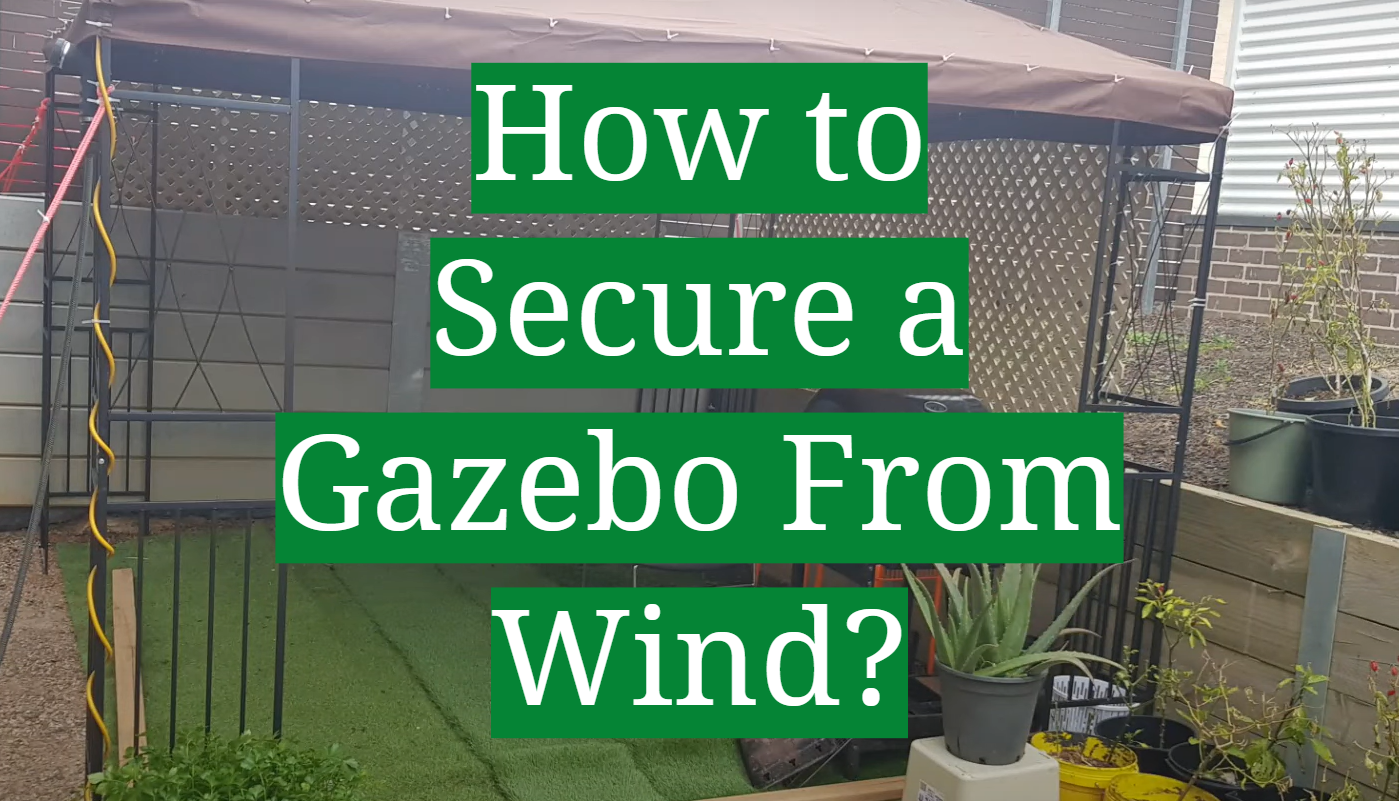




Leave a Reply
View Comments